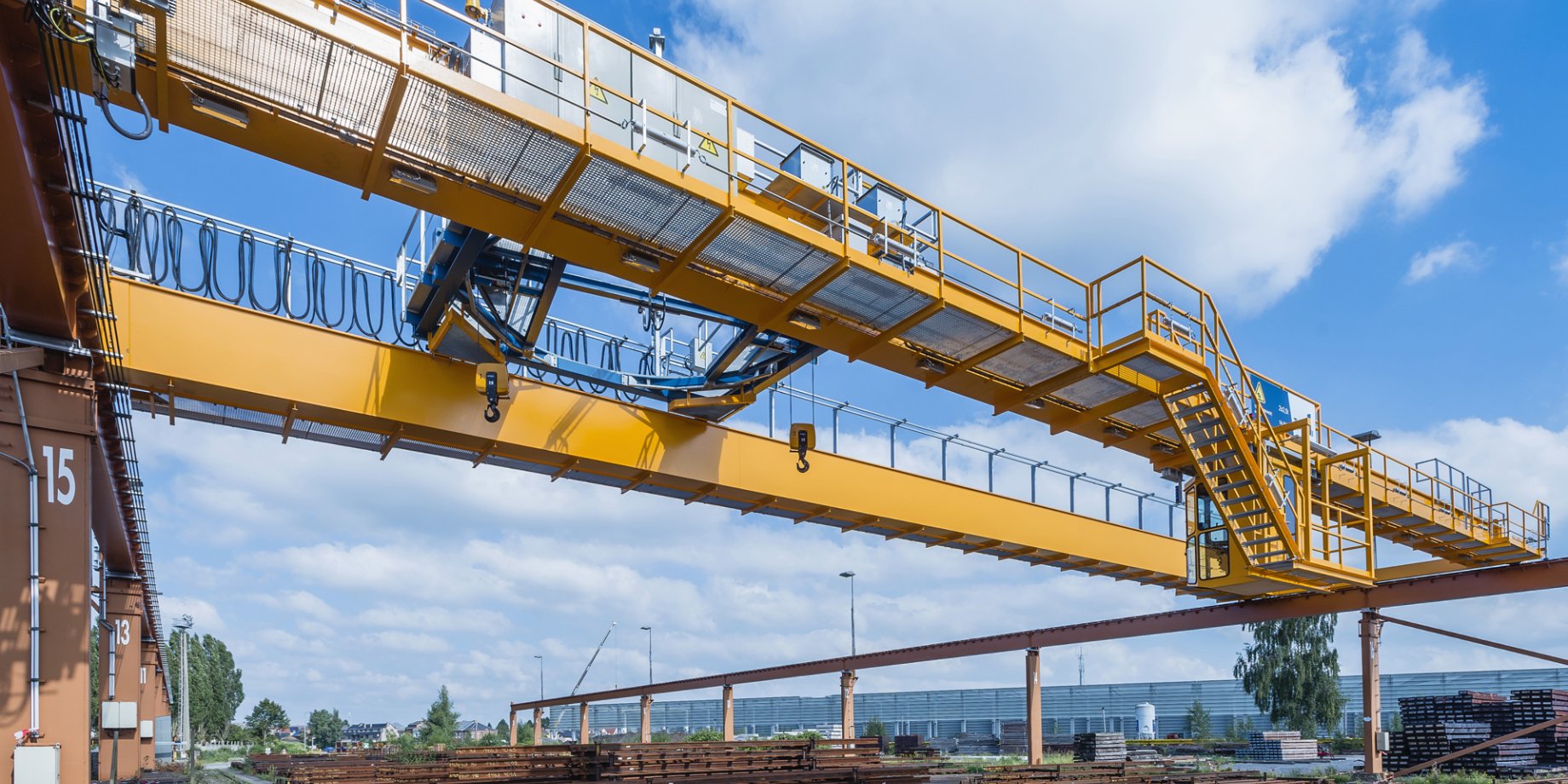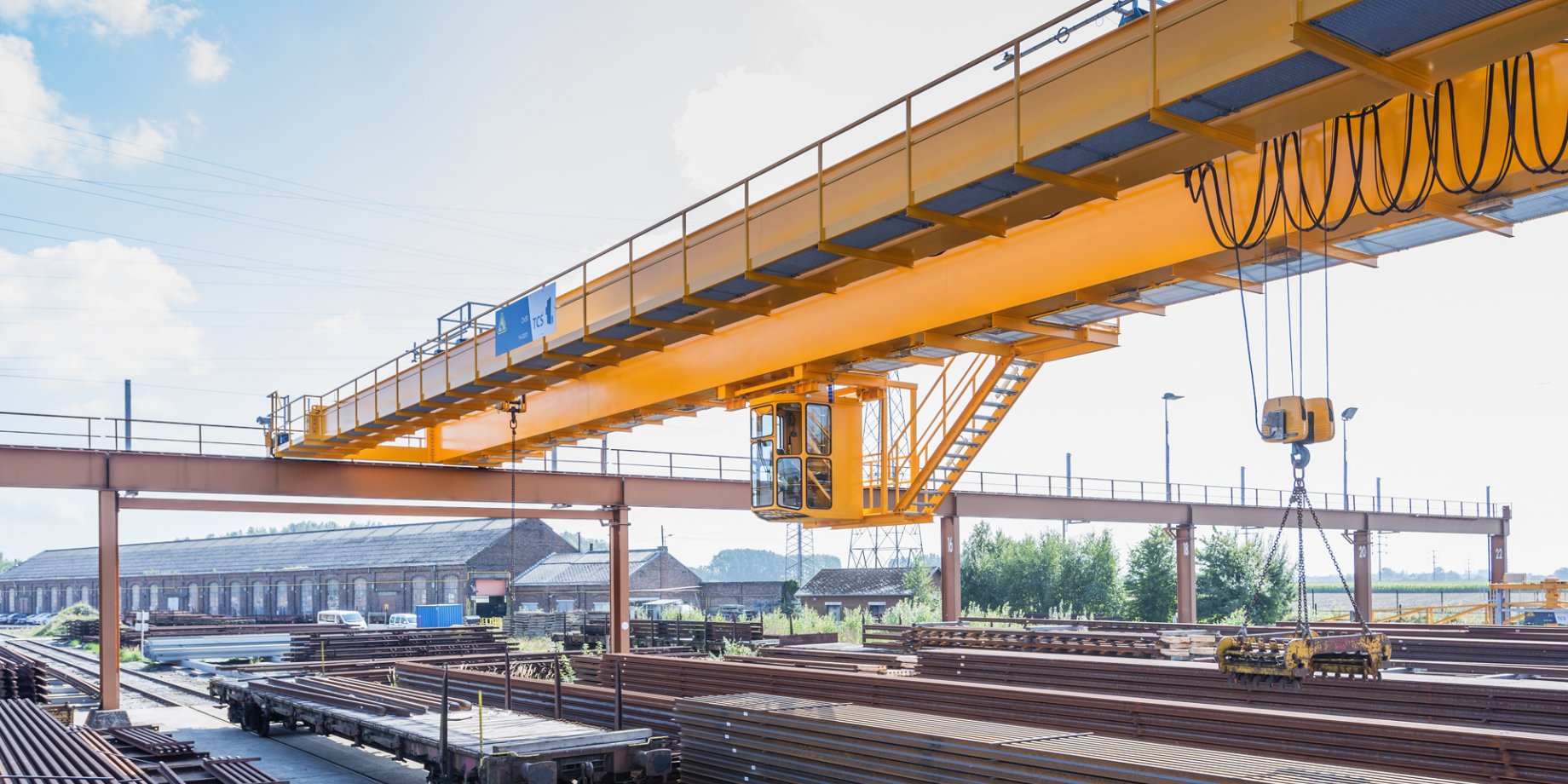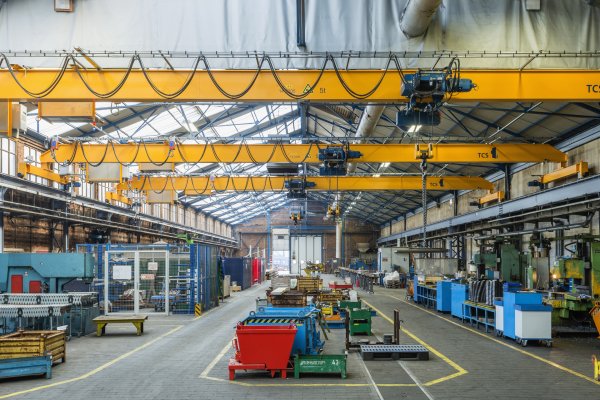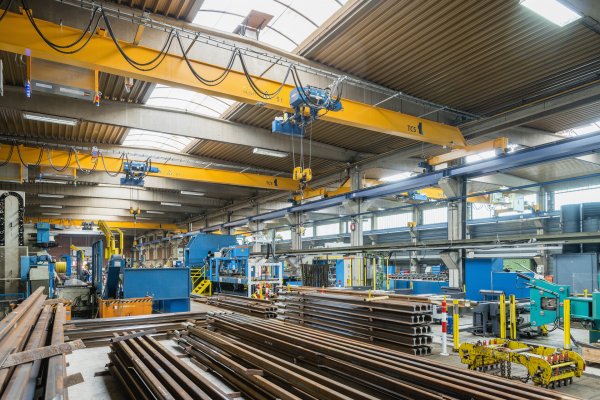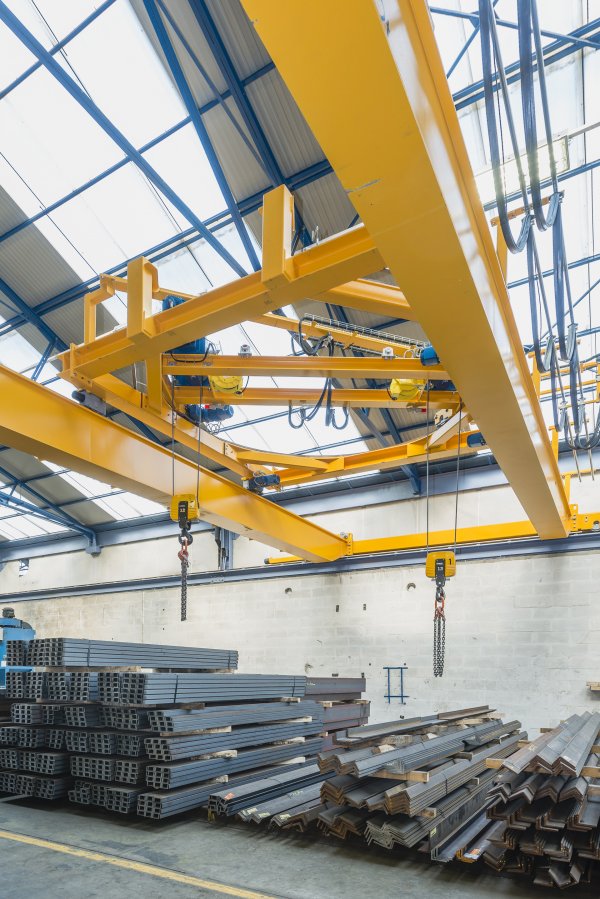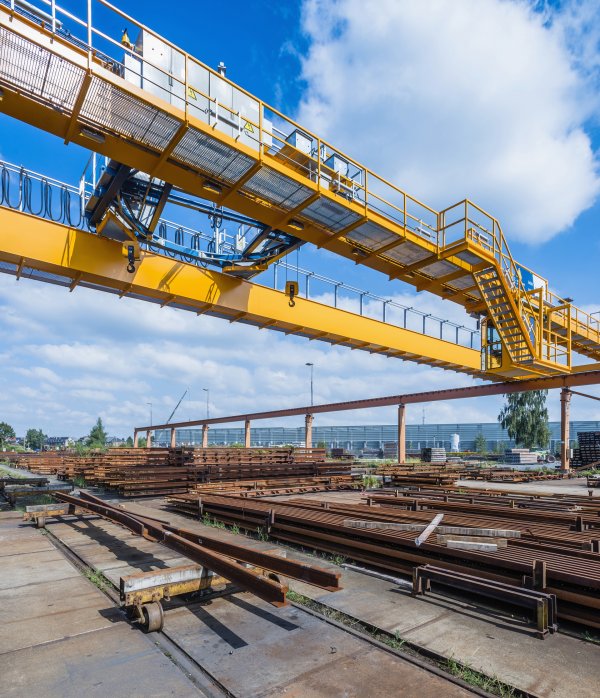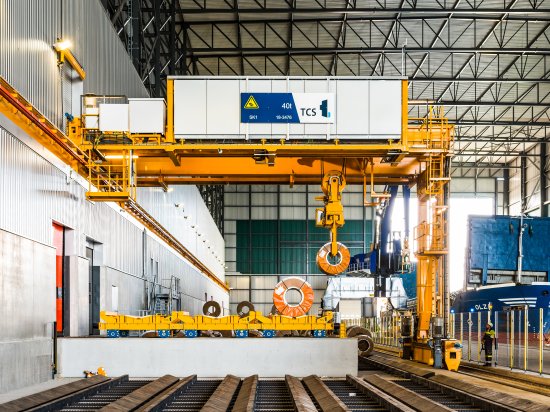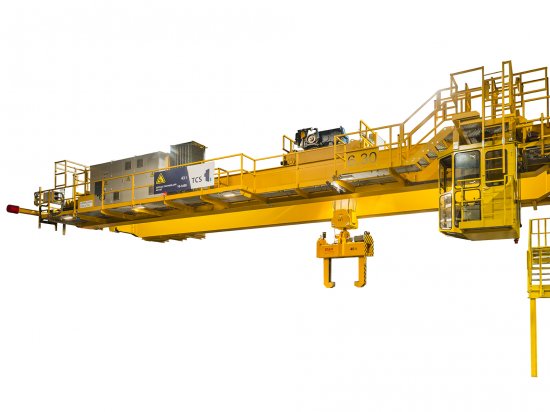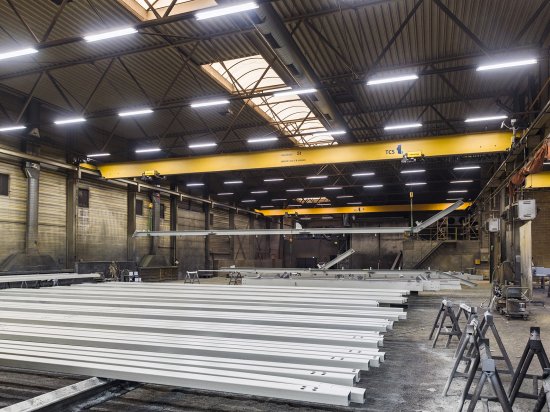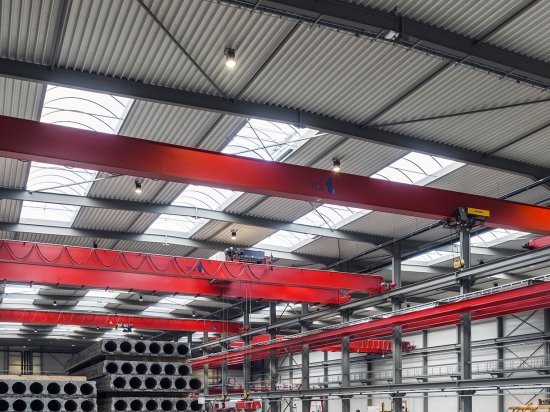Bascoup, located between Charleroi and Mons, is one of the largest Infrabel production sites and the only one producing railway switches. With a staff of 240, including engineers, metalworkers, material specialists and mechanics, the Bascoup site produces around 230 railway switches per year, which involves processing 7,000 tonnes of steel (the weight of the Eiffel Tower), including 4,000 tonnes of special rail steel. A few years ago, on the occasion of the site centennial, Infrabel launched a 52 million euro investment programme at Bascoup focusing on safety improvements, and productivity and capacity increases.
Six workshops, fifteen cranes
The production of railway switches is anything but routine. It is a multi-step process involving high-precision manufacturing of parts (metalwork with tolerance of around 1/10 of a millimetre), complex assembly work and the carrying out of various quality test procedures. As each step in the manufacturing process requires the use of special machinery, the activities are spread over six different workshops. As a result, products have to be transported frequently from one place to another, including intermediate storage locations. Since the 1970s, no less than fifteen overhead travelling cranes have been in place for this purpose.
